The Sea Before Us Tour – D-Day at Sea
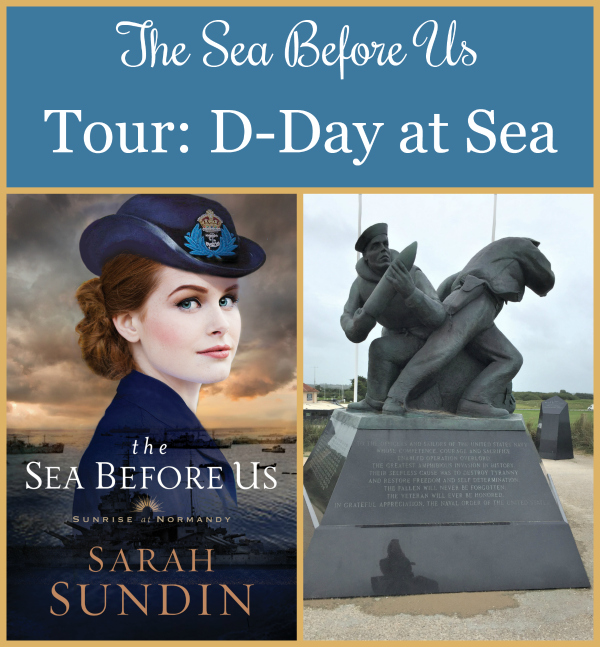 To celebrate the release of The Sea Before Us, I’m conducting a photo tour of locations from the novel that I saw on my research trip to England and Normandy in September.
To celebrate the release of The Sea Before Us, I’m conducting a photo tour of locations from the novel that I saw on my research trip to England and Normandy in September.
February 8—Southwick House near Portsmouth
Today—D-day at Sea
In The Sea Before Us, American naval officer Lt. Wyatt Paxton serves first in London with the naval planning for D-day and later on a destroyer bombarding Omaha Beach. Today I’m sharing about the naval aspect of D-day and featuring photos that relate to the naval aspect of D-day, from Portsmouth Harbor, to crossing the Channel, to the German gun batteries targeted by naval bombardment, to monuments and artifacts.
D-Day Naval Planning
Operation Neptune, the naval component of D-day, was a complex operation involving over 5000 vessels and 195,000 naval personnel. Adm. Sir Bertram Ramsay’s Allied Naval Expeditionary Force Headquarters was in charge of these plans.
Here is a copy of the orders for Operation Neptune at the National Museum of the Royal Navy in Portsmouth. The thick book of orders put out by Ramsay’s Headquarters covered every possible aspect in minute detail that baffled and frustrated the men of the US Navy, who were used to more general orders and more control by individual commanders at sea—but they did lay a solid foundation for this joint effort. Here is also a copy of Ramsay’s Order of the Day, issued to all naval personnel on D-day.
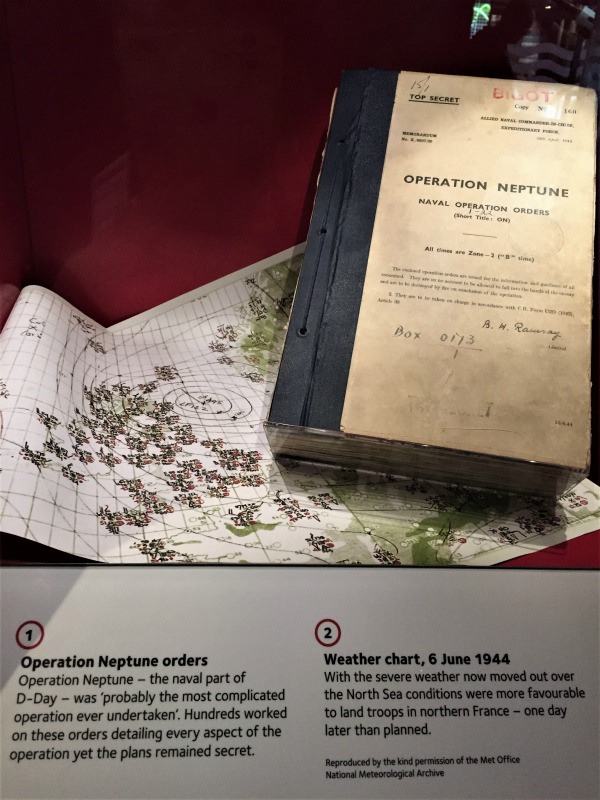
A copy of Operation Neptune orders and a weather map, on display at the National Museum of the Royal Navy, Portsmouth, England, September 2017 (Photo: Sarah Sundin)
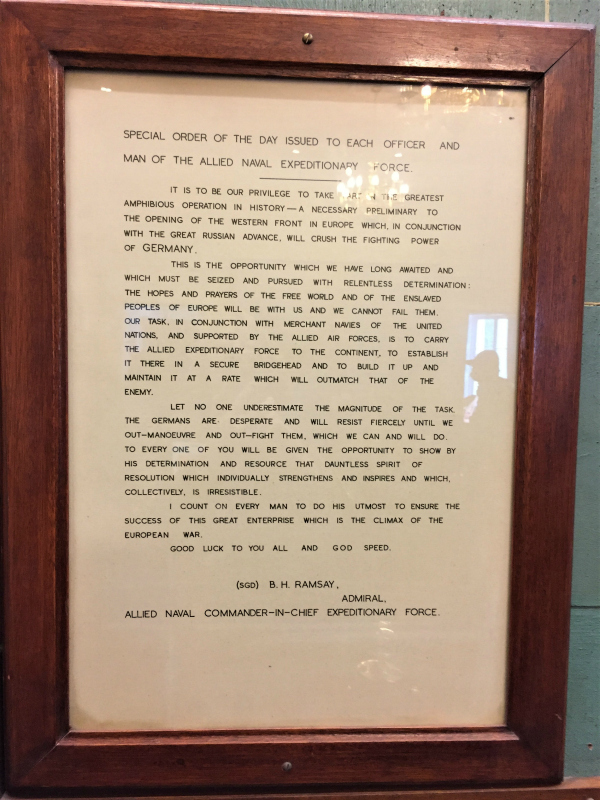
Adm. Sir Bertram Ramsay’s Order of the day for D-day, on display at Southwick House, England, September 2017 (Photo: Sarah Sundin)
D-day at Sea
Transporting the 156,000 Allied soldiers to the landing beaches of Normandy required the largest amphibious operation ever. It was a truly Allied effort with ships and sailors from the United Kingdom, the United States, Canada, France, Norway, Poland, the Netherlands and Greece. Over 500 transports carried the troops and their equipment across the English Channel, and over 1100 landing craft took the troops to shore under fire.
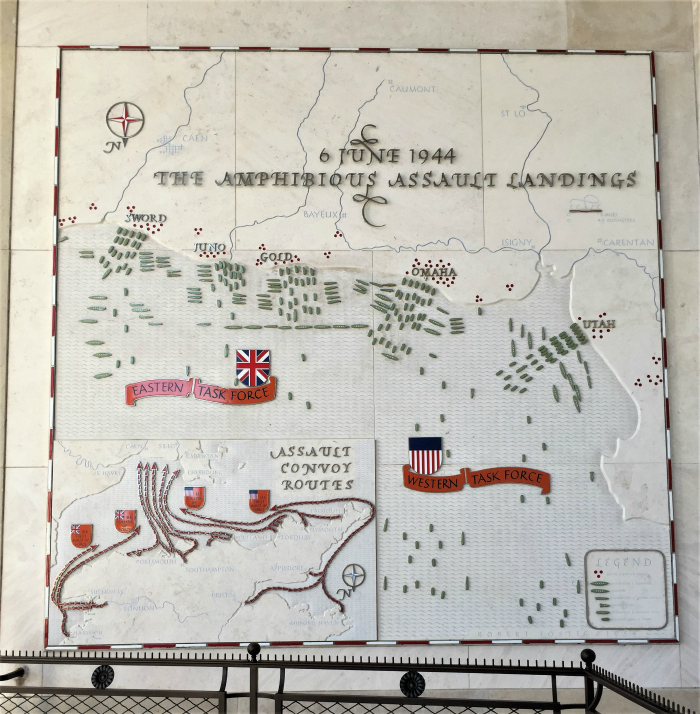
Map of Allied naval operations on D-day, Normandy American Cemetery and Memorial, Colleville-sur-Mer, France, September 2017 (Photo: Sarah Sundin)
To make sure the troops arrived safely, 200 minesweepers crossed the Channel ahead of the transports and swept for naval mines, dangerous work. In fact, minesweeper USS Osprey was sunk by a mine during the night before D-day, one of the first losses.
To protect the fleet and the troops, 112 battleships, cruisers, and destroyers escorted the convoy, guarding against attacks from the air, from surface vessels, and from U-boats lurking below the surface. At dawn, these warships opened fire on German gun positions and strongpoints on shore. In the American sector, where the troops were scheduled to land at 0630, this allowed only 40 minutes of bombardment, but in the British and Canadian sector, where the troops landed at 0730, allowing much longer bombardment.
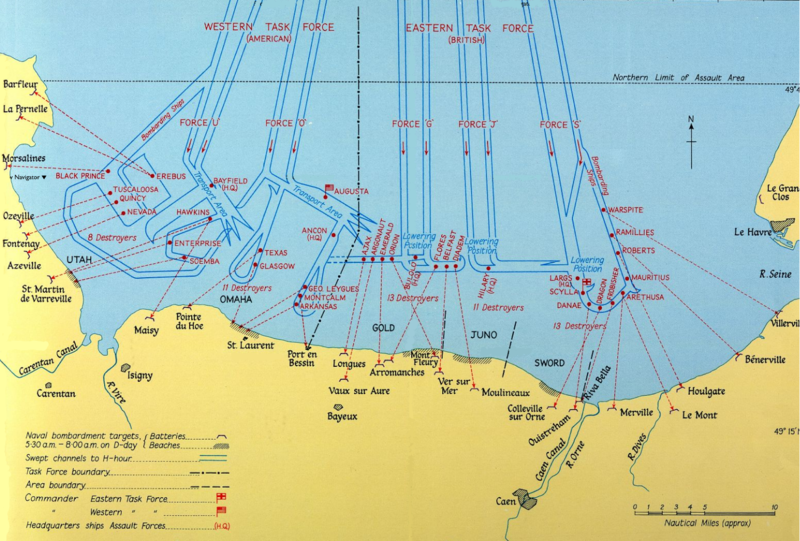
Map showing Allied naval bombardment of Normandy on D-day, 6 June 1944 (Victory in the West, vol. 1, public domain via National Archives, UK)
Destroyers at Omaha
Throughout the day, the warships provided gunfire support, directed whenever possible by radio from liaisons on shore or from spotter aircraft. However, on Omaha Beach, most of the radios and radiomen were lost in the landings. This didn’t stop the ships of US Destroyer Squadron 18. The captains observed the horror on Omaha and charged within 800 yards of shore, endangering their own ships, to destroy targets of opportunity. Their work that day took out many positions and helped the Americans advance off the beach.
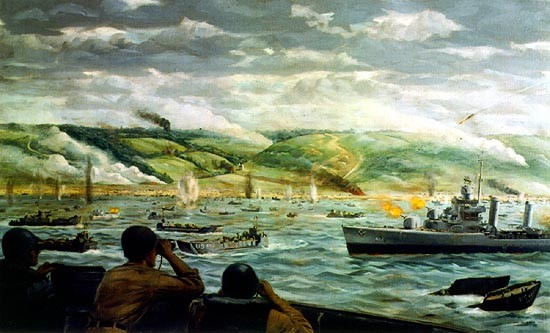
“The Battle for Fox Green Beach, D-Day Normandy” View of invasion of beach, D-Day, as US destroyers come close to Omaha Beach to aid ground troops. Painting, Oil on Canvas; by Dwight C. Shepler; 1944. (US Naval History and Heritage Command)
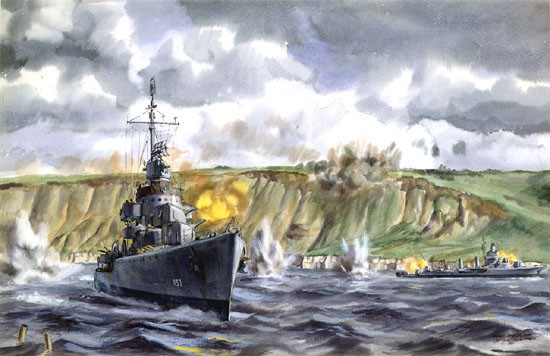
“Target of Opportunity” On D-Day, destroyer USS Emmons comes dangerously close to shore to battle with German gun battery on Omaha Beach. Painting, Watercolor on Paper; by Dwight C. Shepler; 1944. (US Naval History and Heritage Command)
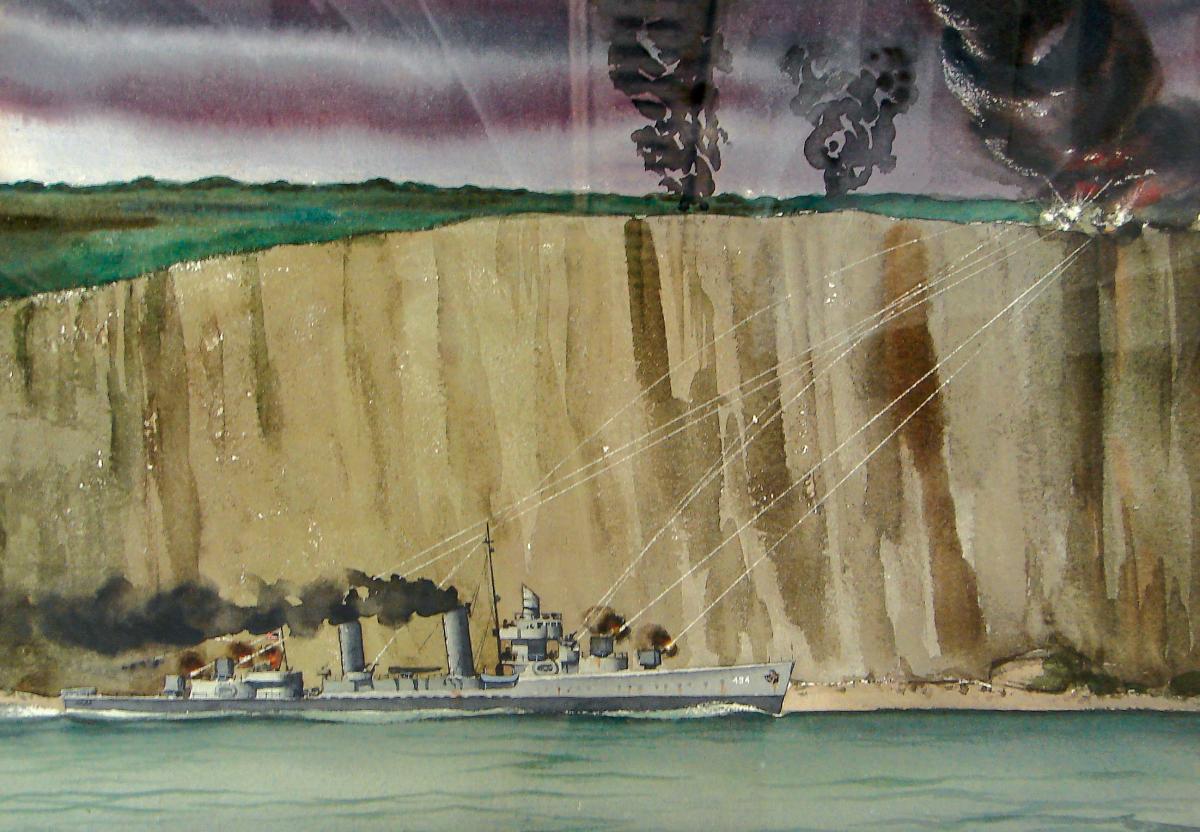
Early on D-Day, several U.S. destroyers exchanged fire with German artillery atop cliffs just east of Omaha Beach, a scene likely depicted in Coast Guard combat artist H. B. Vestal’s watercolor of the USS Doyle. At 1100 the destroyer was 800 yards off Omaha’s Easy Red, knocking out German machine-gun emplacements and casemates. (U.S. COAST GUARD HISTORICAL ARTIFACT COLLECTION, 2008.0103 via US Naval Institute)
Naval Losses
On D-day itself, three warships were lost – Norwegian destroyer Svenner was sunk by German torpedo boats on the far eastern flank in the sole surface attack of the day, destroyer USS Corry was sunk by German shore batteries off Utah Beach, and destroyer HMS Wrestler was heavily damaged by shore batteries and declared a total loss. In addition, about 40 landing ships were lost as well as hundreds of the smaller landing craft. Hundreds of Allied sailors lost their lives, with the heaviest losses among shore parties and Naval Combat Demolition Units.
Tour Photos
Let’s sail! Wyatt sailed from Weymouth with the ships of US Destroyer Squadron 18, but many ships sailed from Portsmouth. I was privileged to take a harbor cruise at the Portsmouth Historic Dockyard.
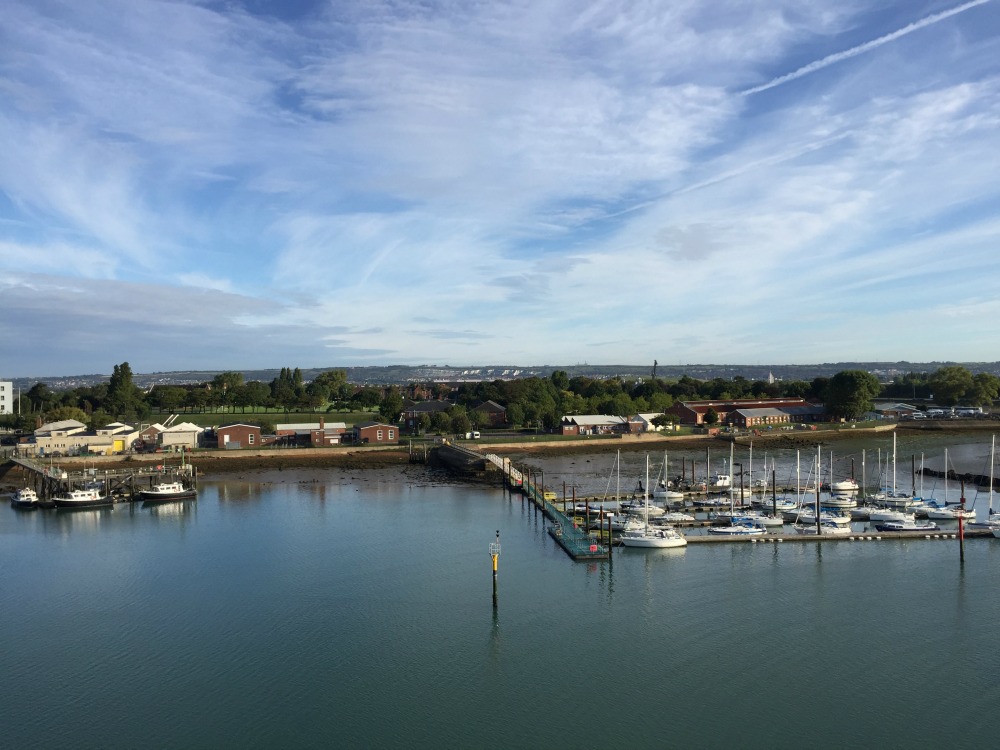
Portsmouth, England, viewed from the harbor, September 2017 (Photo: Sarah Sundin)
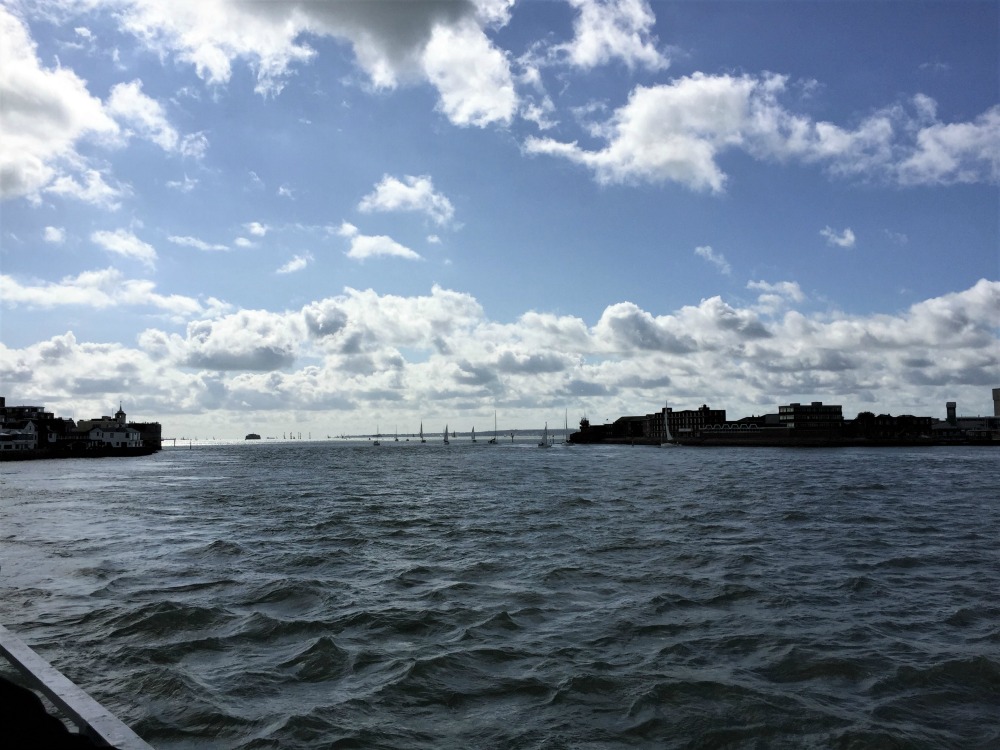
Mouth of Portsmouth Harbor, England, September 2017 (Photo: Sarah Sundin)
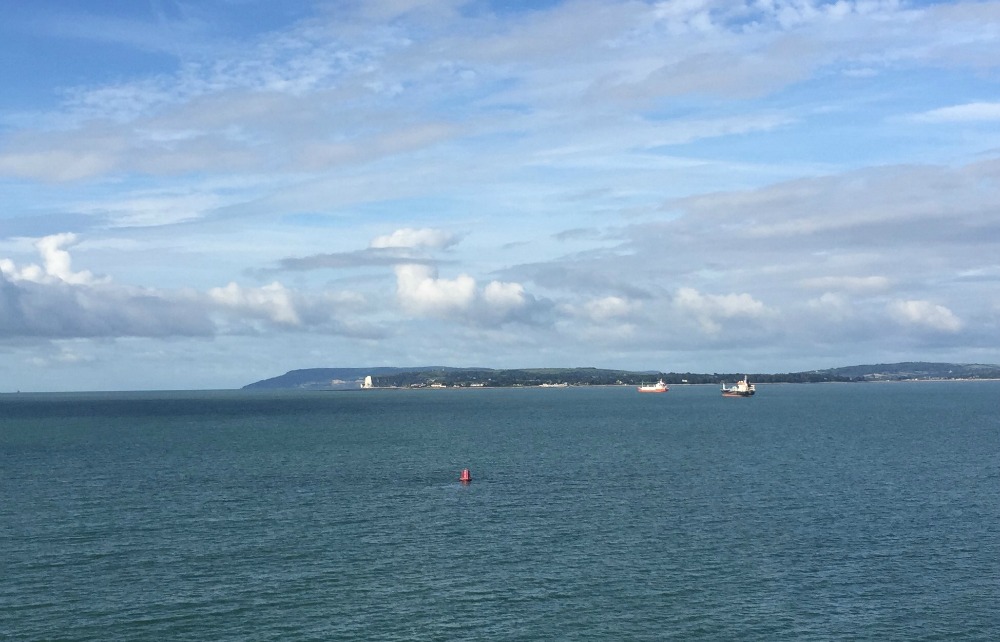
The Isle of Wight, viewed from south of Portsmouth, England, September 2017 (Photo: Sarah Sundin)
Let’s cross the Channel! My husband I took the ferry from Portsmouth across the English Channel to Ouistreham, which was near Sword Beach, where British troops landed on D-day. The weather was cool, cloudy, and blustery, not unlike the troops faced on D-day, and seeing the shores of Normandy take shape on the horizon was an incredibly moving experience.
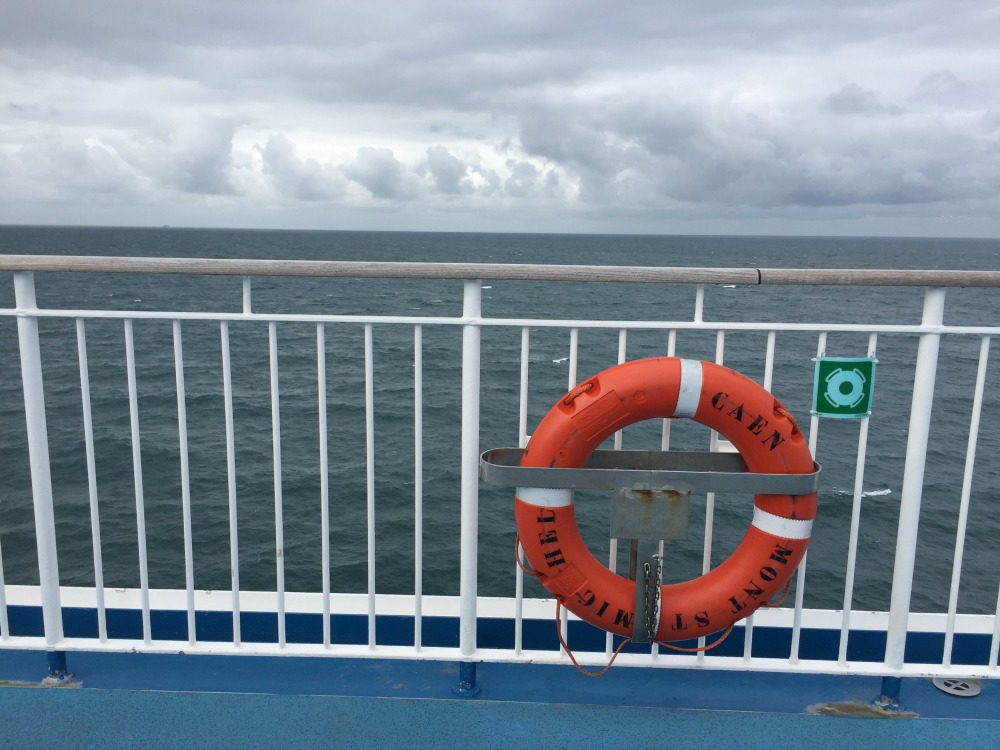
On board ferry Mont St. Michel in the English Channel, September 2017 (Photo: Sarah Sundin)
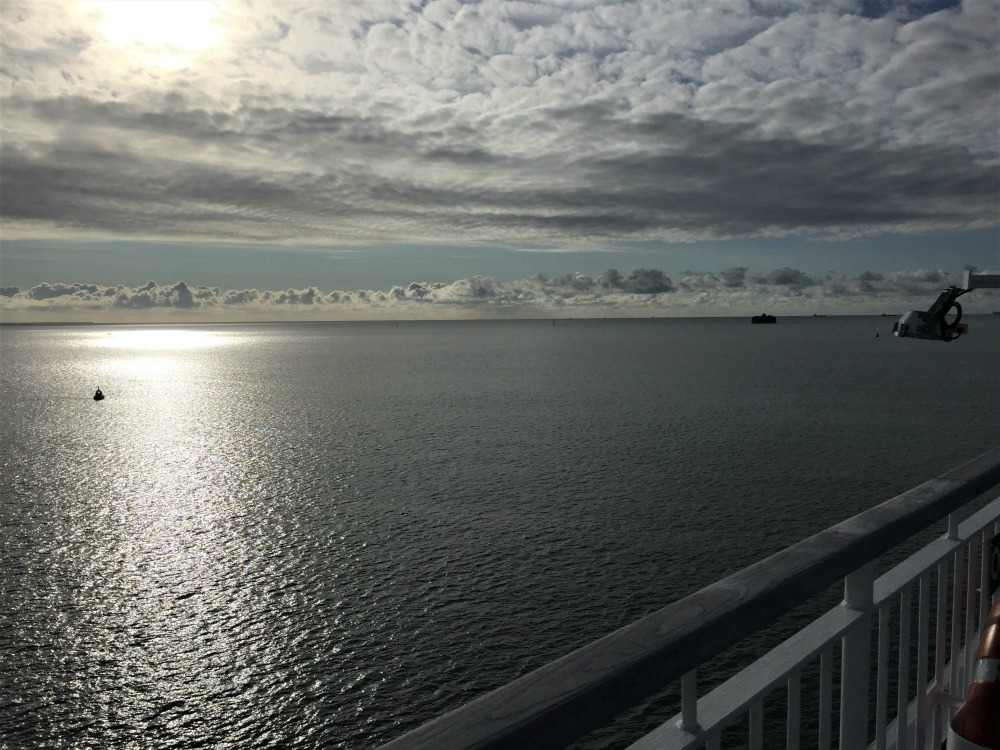
The English Channel viewed from ferry Mont St. Michel, September 2017 (Photo: Sarah Sundin)
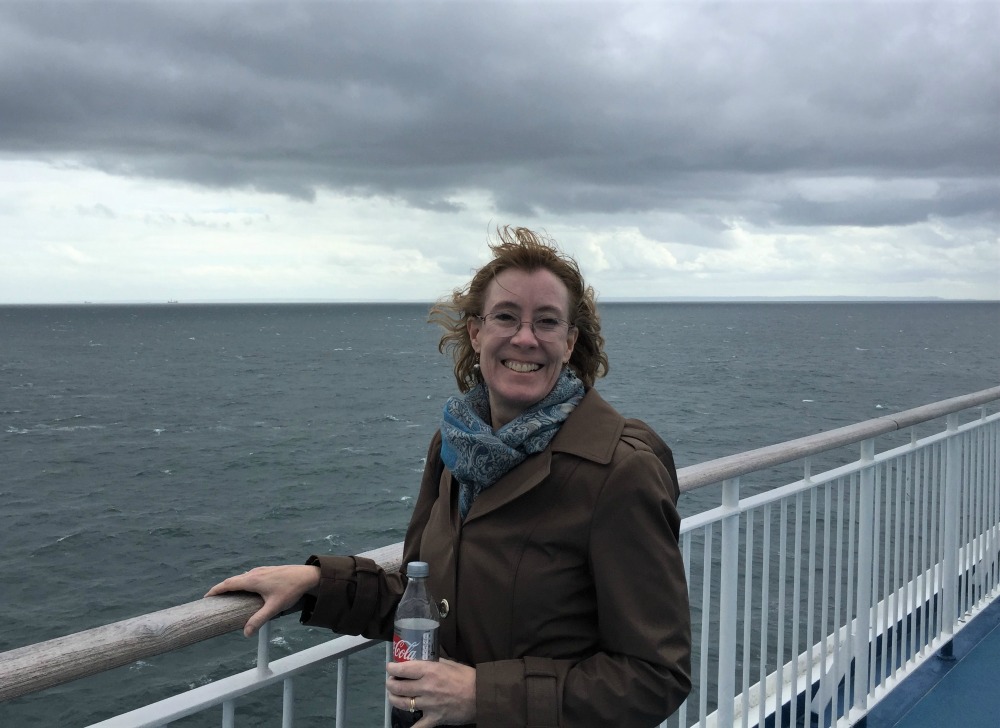
Sarah Sundin on ferry Mont St. Michel, with the shores of Normandy appearing on the horizon, September 2017 (Photo: Sarah Sundin)
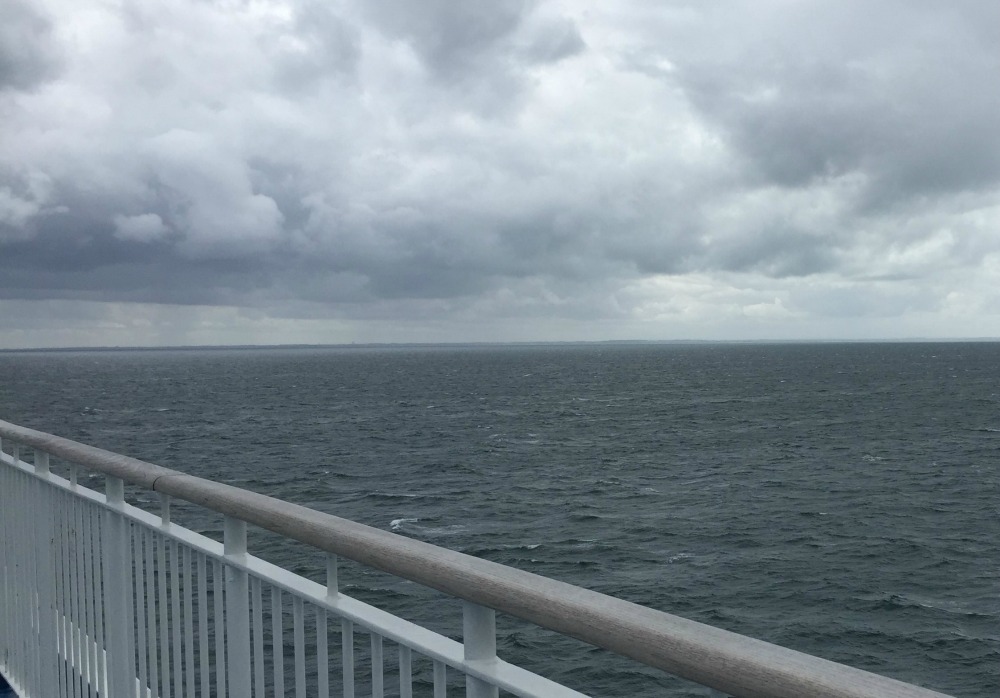
The shores of Normandy appearing, from ferry Mont St. Michel, September 2017 (Photo: Sarah Sundin)
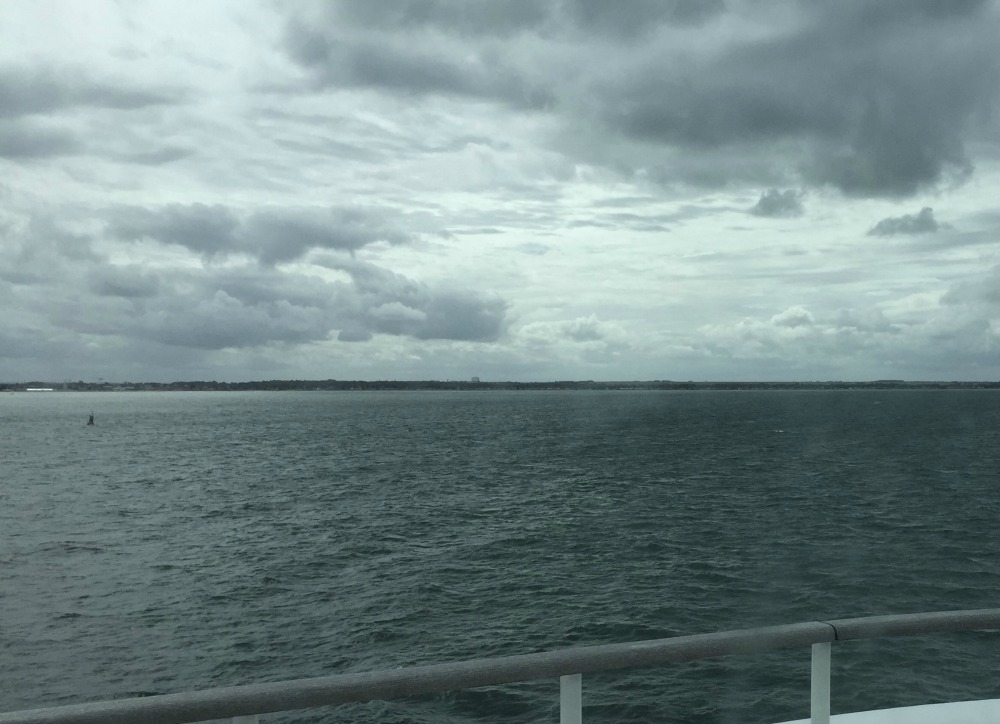
The shores of Normandy appearing, from ferry Mont St. Michel, September 2017 (Photo: Sarah Sundin)
On D-day, the Allied warships did battle with German shore batteries, which were targeting Allied troops on the landing beaches. These huge guns were often set in thick reinforced concrete casements that were virtually indestructible. To destroy one meant lobbing a shell into the narrow openings. However, hitting the batteries often damaged the guns and drove the gun crews to seek shelter, which bought critical time for the soldiers on the beaches. These photos are from the batteries at Longues-sur-Mer, in the British sector between Gold Beach and Omaha Beach.
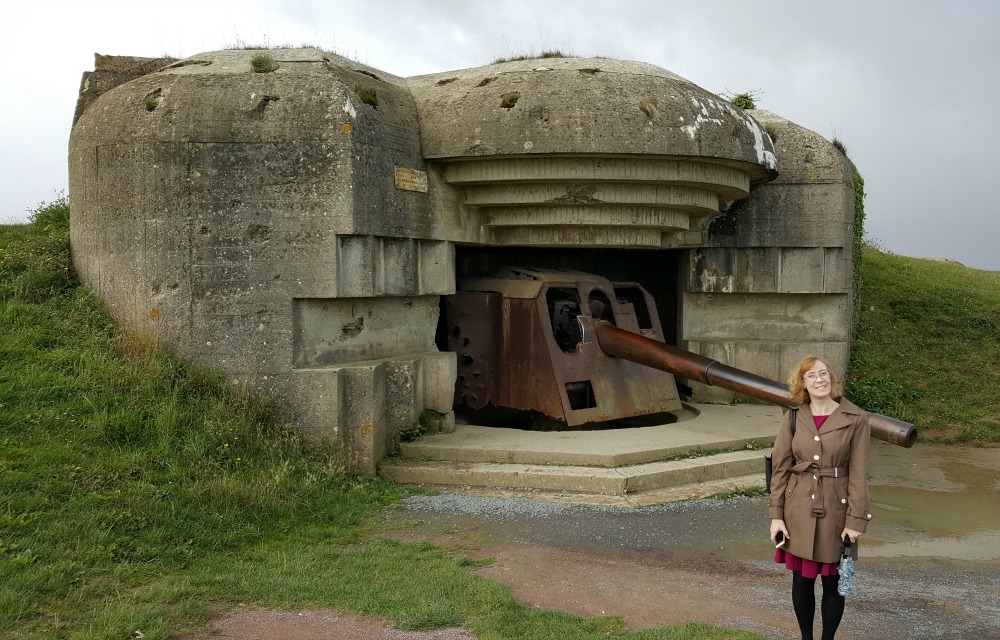
Sarah Sundin at Longues-sur-Mer, France, September 2017 (Photo: Sarah Sundin)

Longues-sur-Mer gun battery, Longues-sur-Mer, France, September 2017 (Photo: Sarah Sundin)
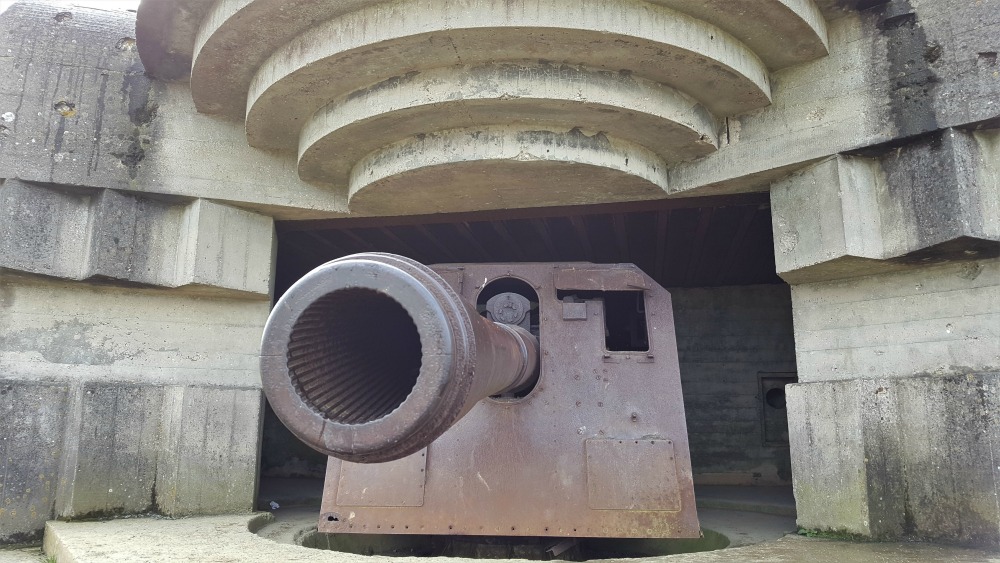
Longues-sur-Mer gun battery, Longues-sur-Mer, France, September 2017 (Photo: David Sundin)
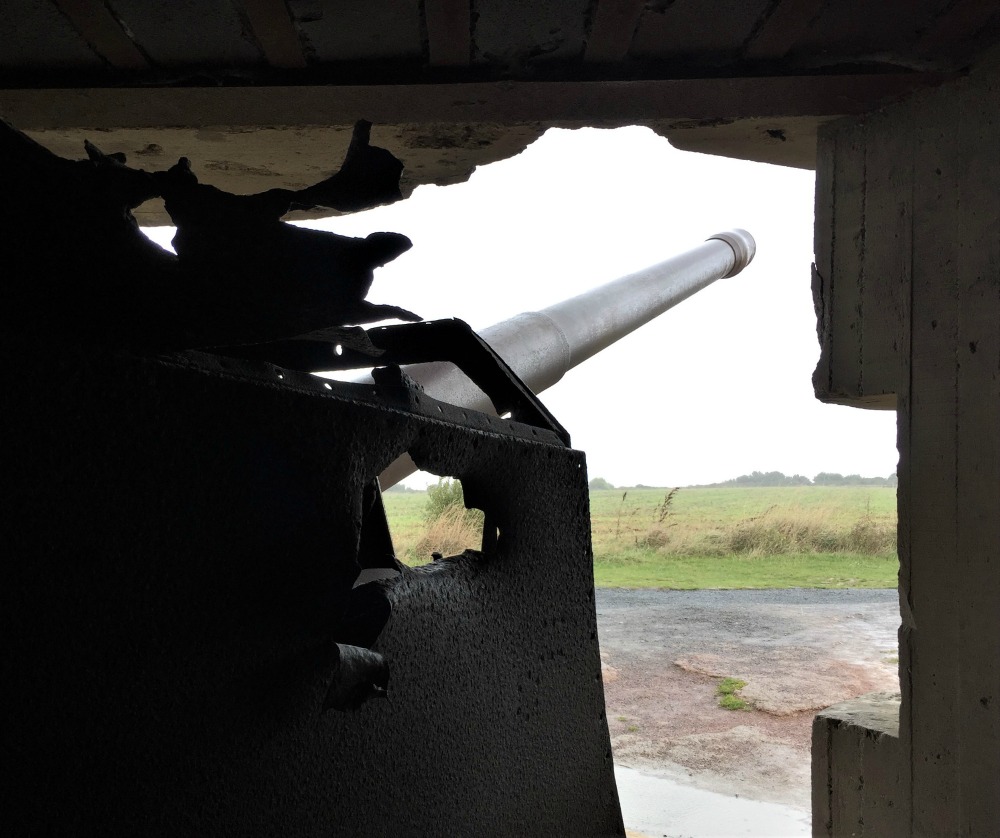
View from inside Longues-sur-Mer gun battery. Note damage. Longues-sur-Mer, France, September 2017 (Photo: Sarah Sundin)
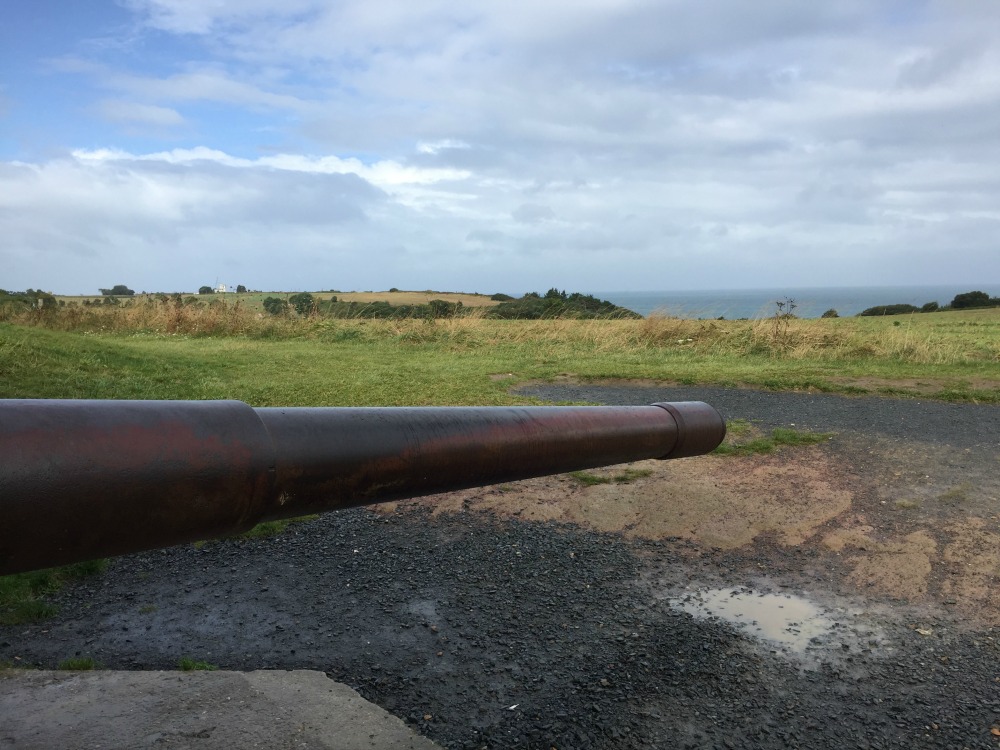
View from inside Longues-sur-Mer gun battery. Longues-sur-Mer, France, September 2017 (Photo: Sarah Sundin)
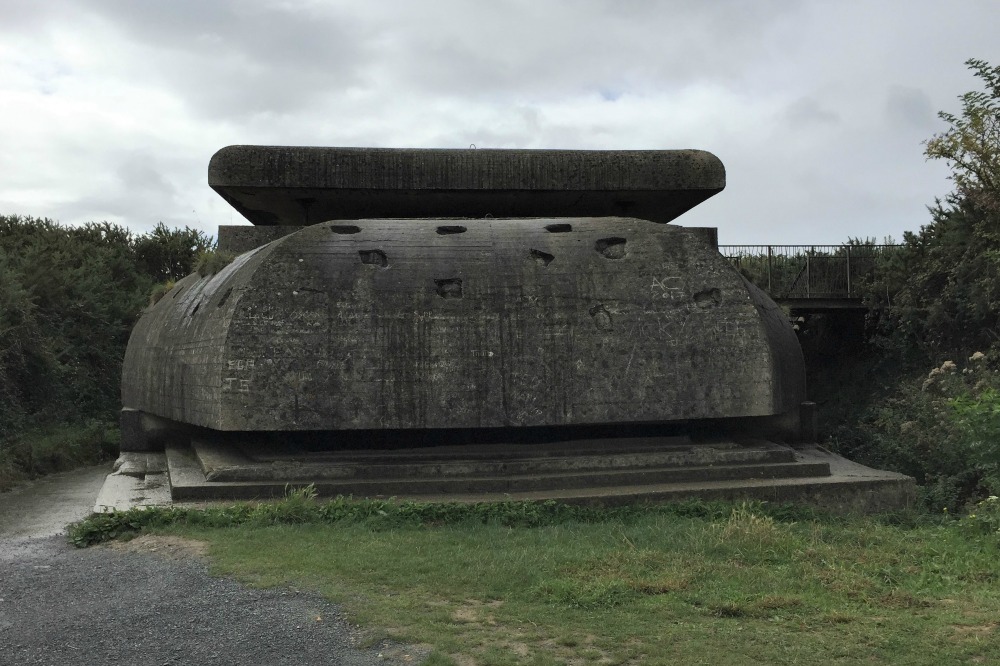
Longues-sur-Mer gun battery. Longues-sur-Mer, France, September 2017 (Photo: Sarah Sundin)
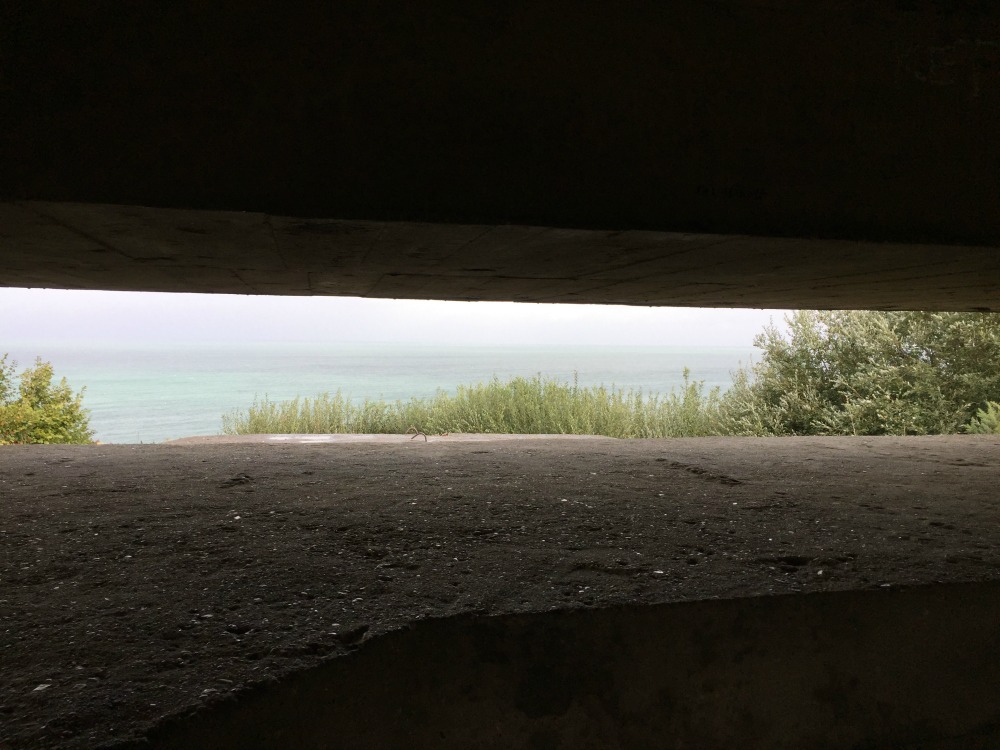
A view made famous in the movie “The Longest Day,” inside Longues-sur-Mer gun battery. Longues-sur-Mer, France, September 2017 (Photo: Sarah Sundin)
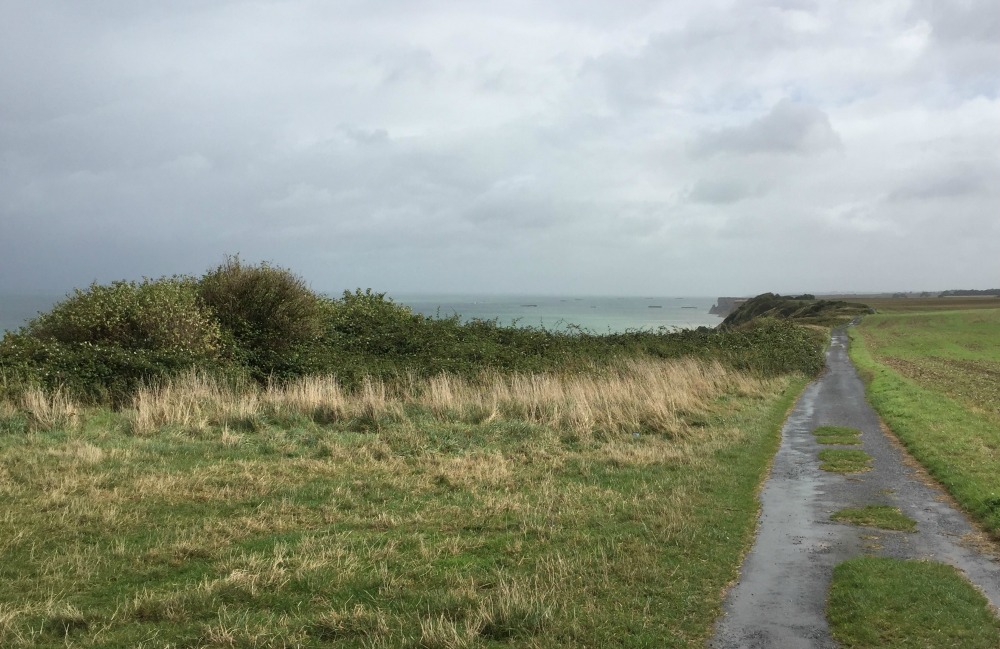
Sword Beach and remnants of Mulberry artificial harbors, seen from Longues-sur-Mer, France, September 2017 (Photo: Sarah Sundin)
The Maisy battery is off the beaten track but well worth a visit for more adventurous tourists. These guns were trained on Utah Beach. A little farther inland, the guns and bunkers were well camouflaged, either underground or by the use of camouflage nets, making them difficult to spot by sea or air.
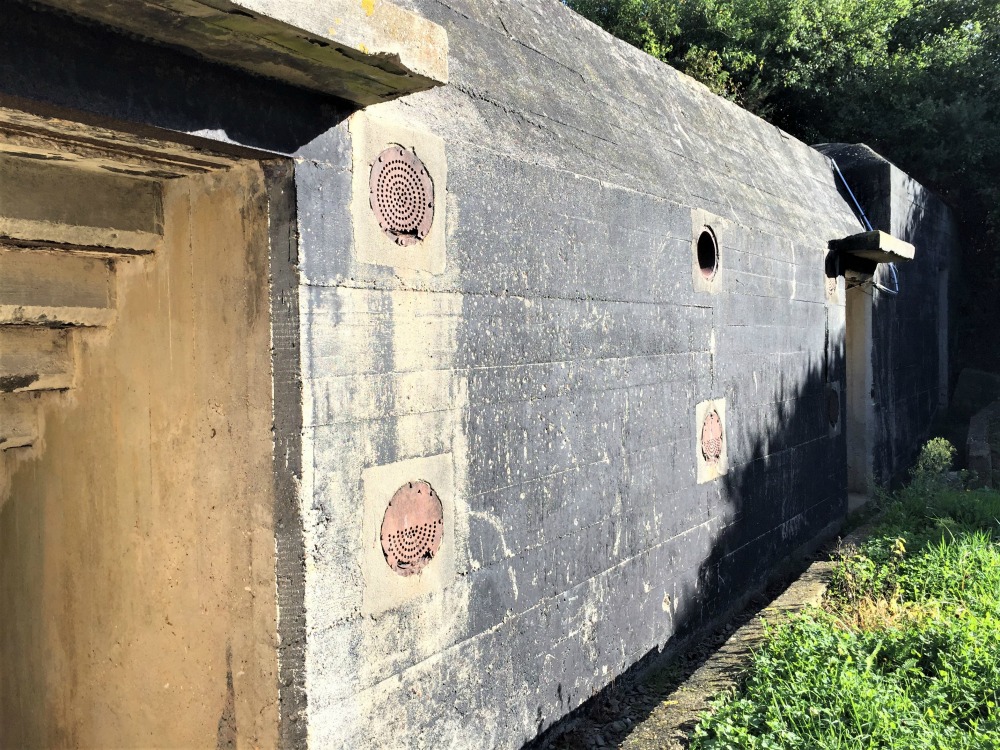
Bunker at Maisy Battery, Maisy-Grandcamps, France, September 2017 (Photo: Sarah Sundin)
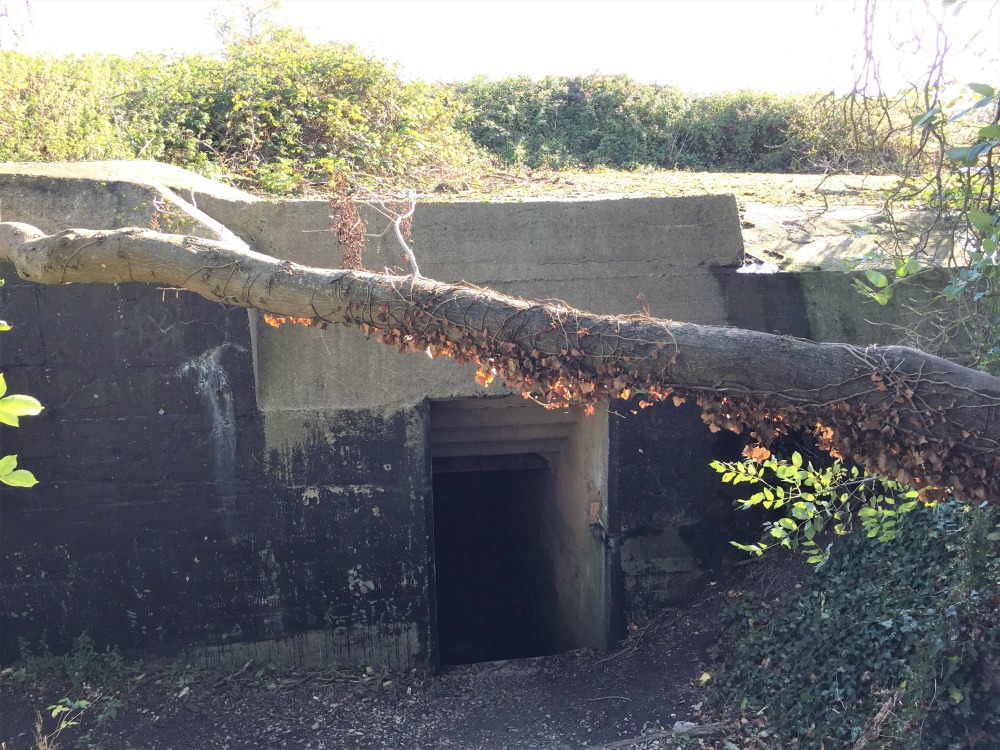
Bunker at Maisy Battery, Maisy-Grandcamps, France, September 2017 (Photo: Sarah Sundin)
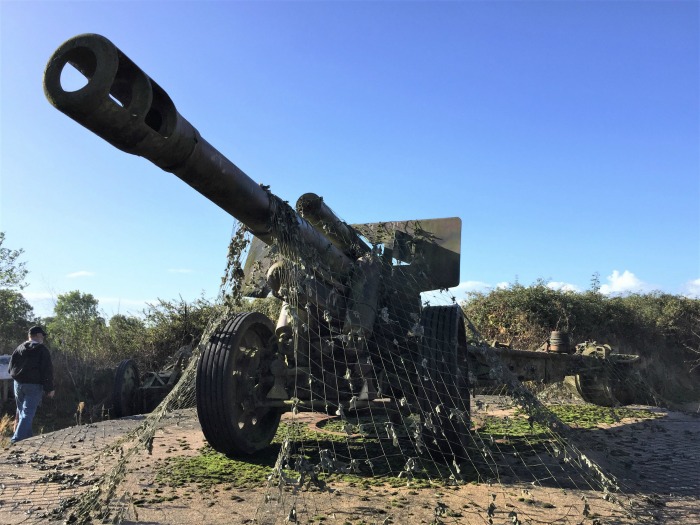
Gun at Maisy Battery, Maisy-Grandcamps, France, September 2017 (Photo: Sarah Sundin)
Utah Beach contains the only memorial in Normandy to the sailors and naval officers who helped make D-day possible. Over five thousand ships and almost two hundred thousand naval personnel participated on that momentous day, and their actions deserve to be commemorated. The statue depicts a sailor loading a gun for shore bombardment, a naval officer calling out orders, and a member of a naval combat demolition unit (these men served on the landing beaches and took heavy casualties). Surrounding the statue are plaques with arrows pointing to the ships’ locations.
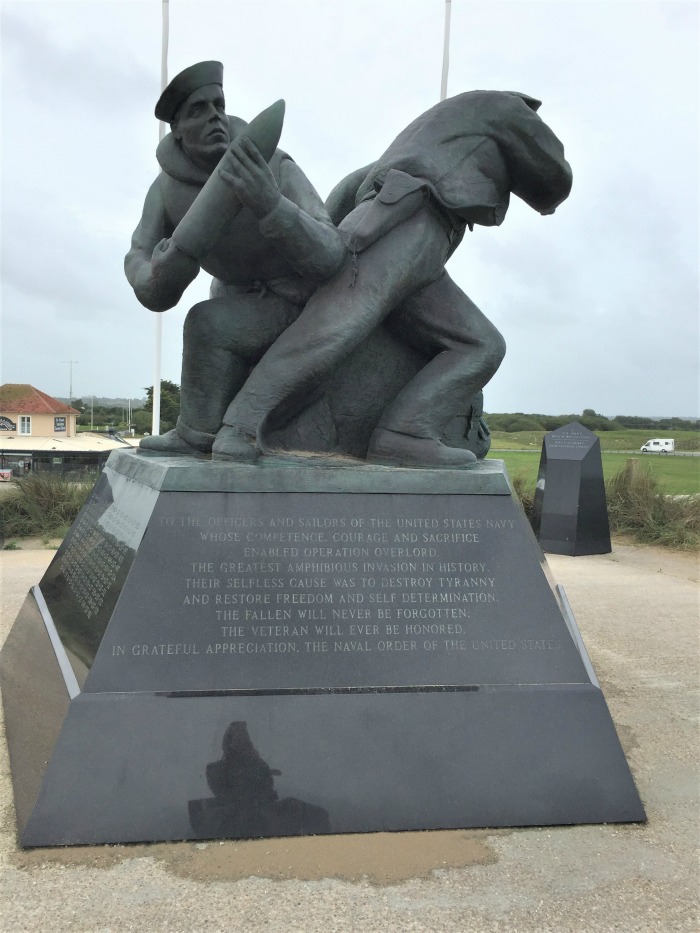
Depiction of American sailor loading gun, US Navy Monument, Utah Beach, Sainte Marie du Mont, France, September 2017 (Photo: Sarah Sundin)
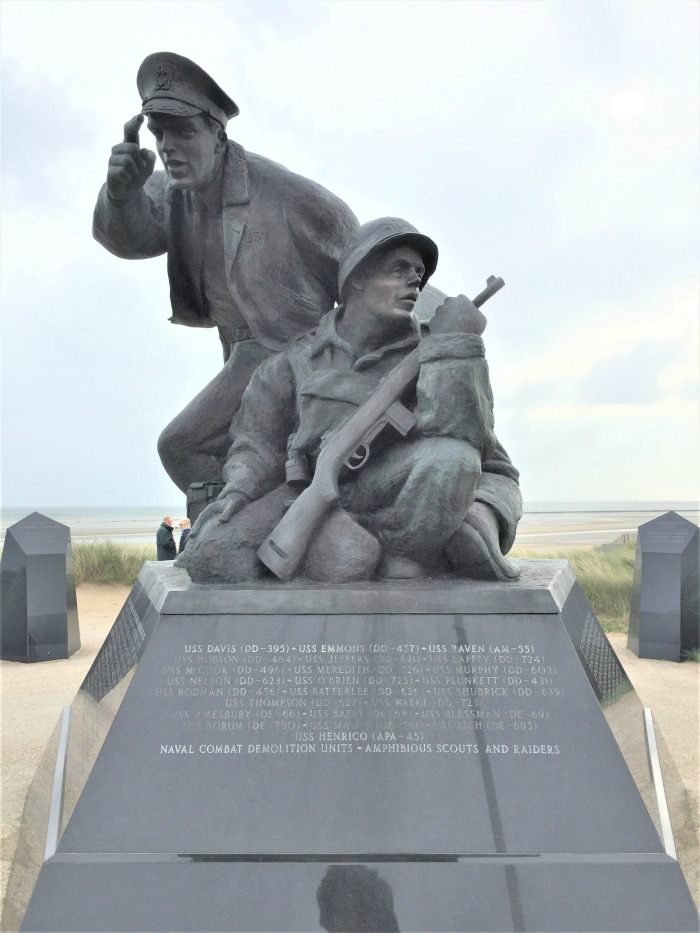
Depiction of a naval officer and a member of a naval combat demolition unit, US Navy Monument, Utah Beach, Sainte Marie du Mont, France, September 2017 (Photo: Sarah Sundin)
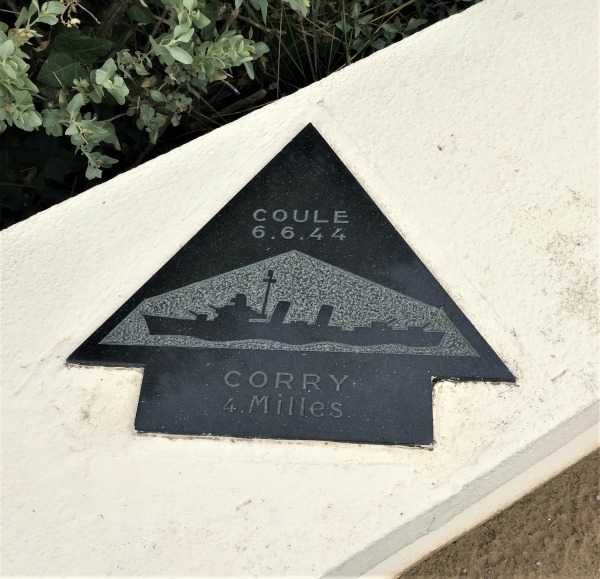
Plaque honoring the destroyer USS Corry, the only US warship lost on D-day, US Navy Monument, Utah Beach, Sainte Marie du Mont, France, September 2017 (Photo: Sarah Sundin)


I love it when writers of historical fiction do their research! It adds so much authenticity. And how exciting for you, Sarah, to be on the spot where the world’s fate hung in the balance just a few short decades ago.
So inspiring. Hope to see it in person one day.
Thanks, Sarah, for the photos, and for caring to do historical research. I discovered your site after searching Google for the wartime fat collection program. (Thanks for that info, too. I still collect grease in a can, instead of pouring it down the drain, because my Mom does, and that’s because her Mom did, and know I know why!)
I may read one of your novels; I’m not a novel reader, but I like your obvious intelligence, your youthful enthusiasm for this time period, and that you apparently have a heart and mind re-newed by the Spirit if our Lord and Savior Jesus the Christ. I will assume that your novels will reflect the same. Thanks for what you do.